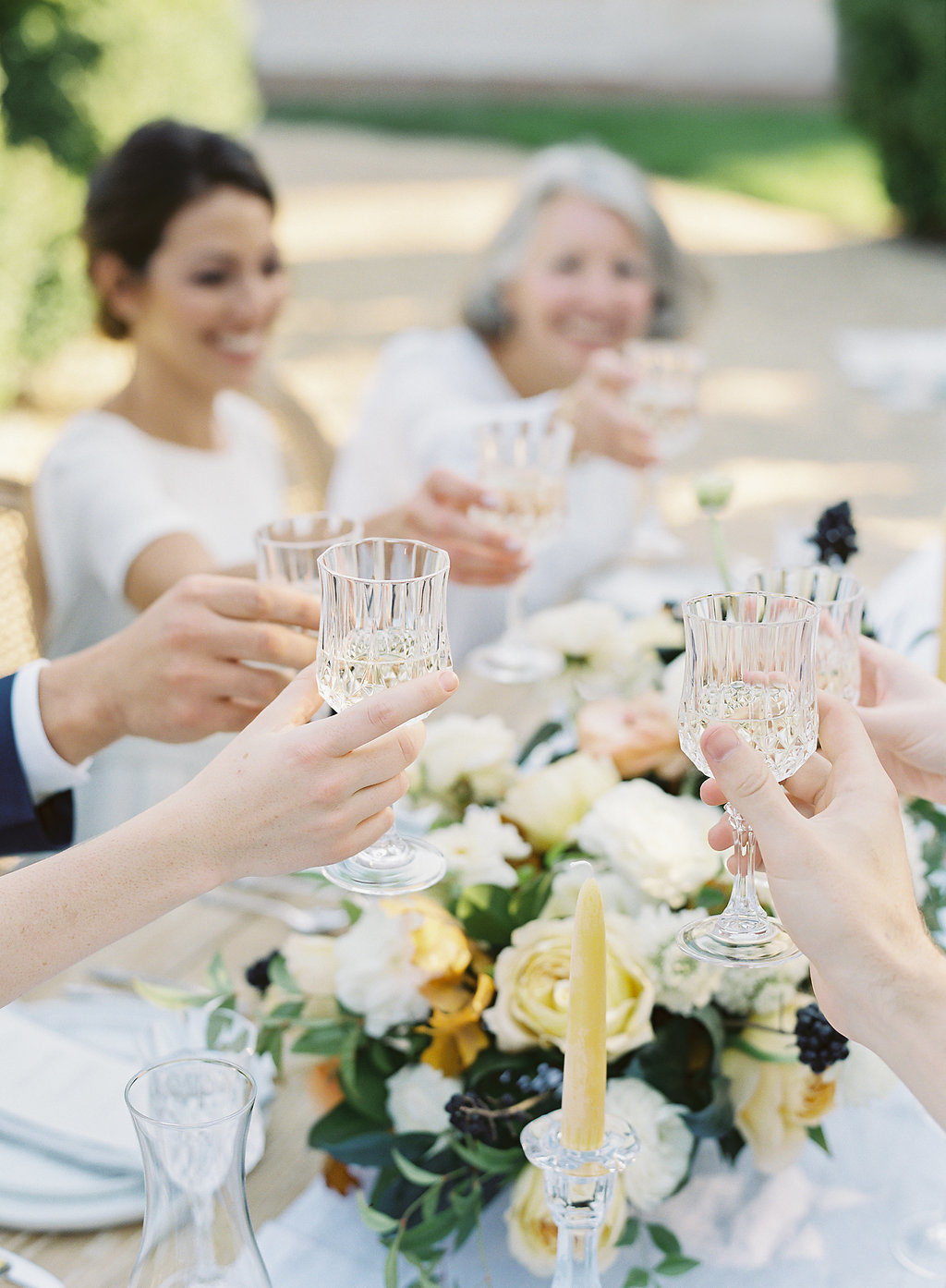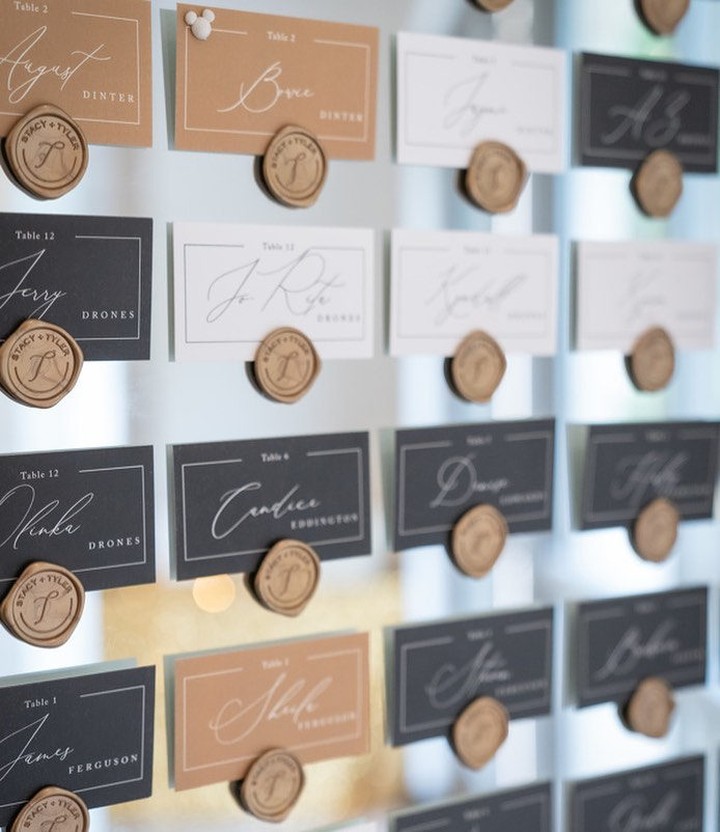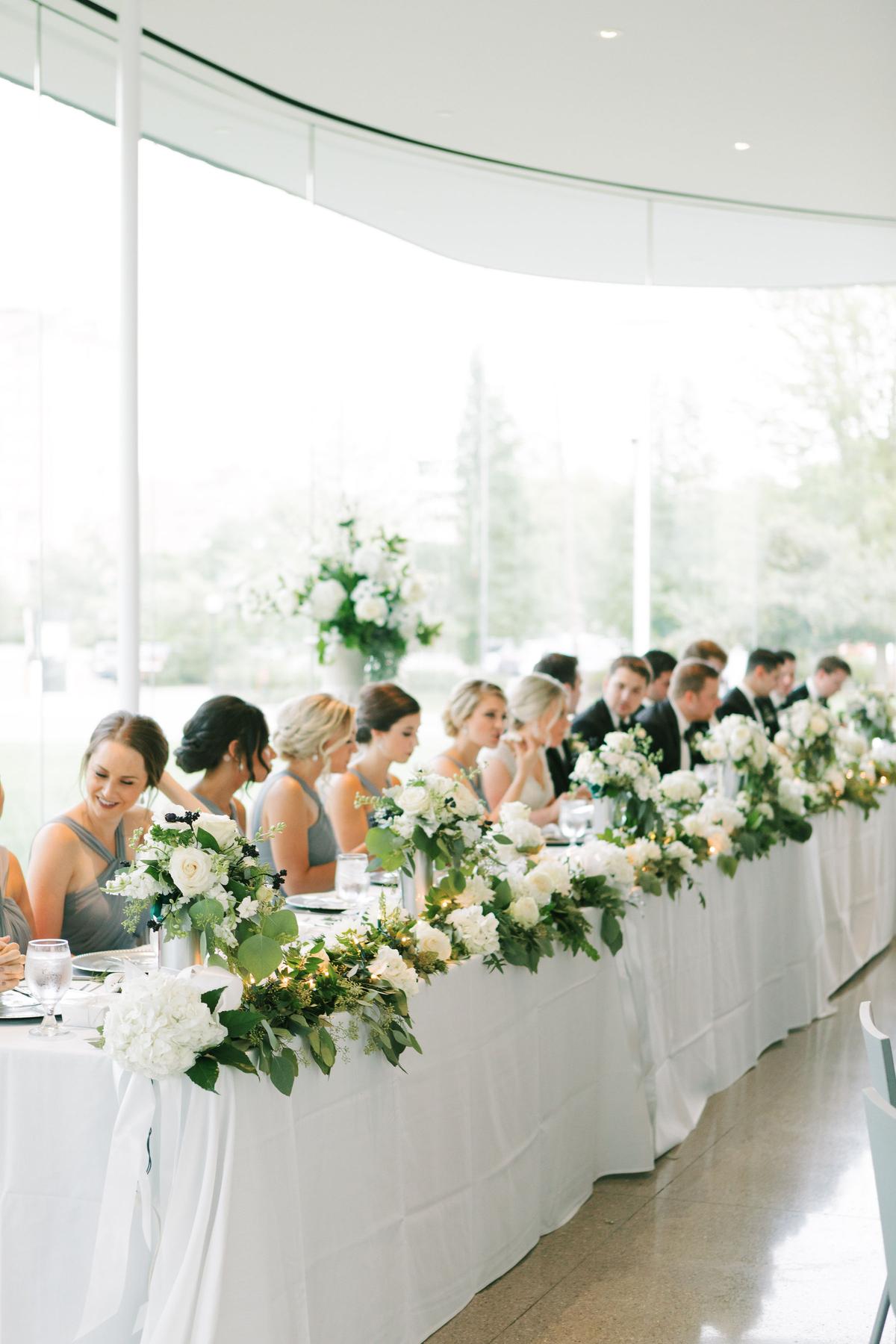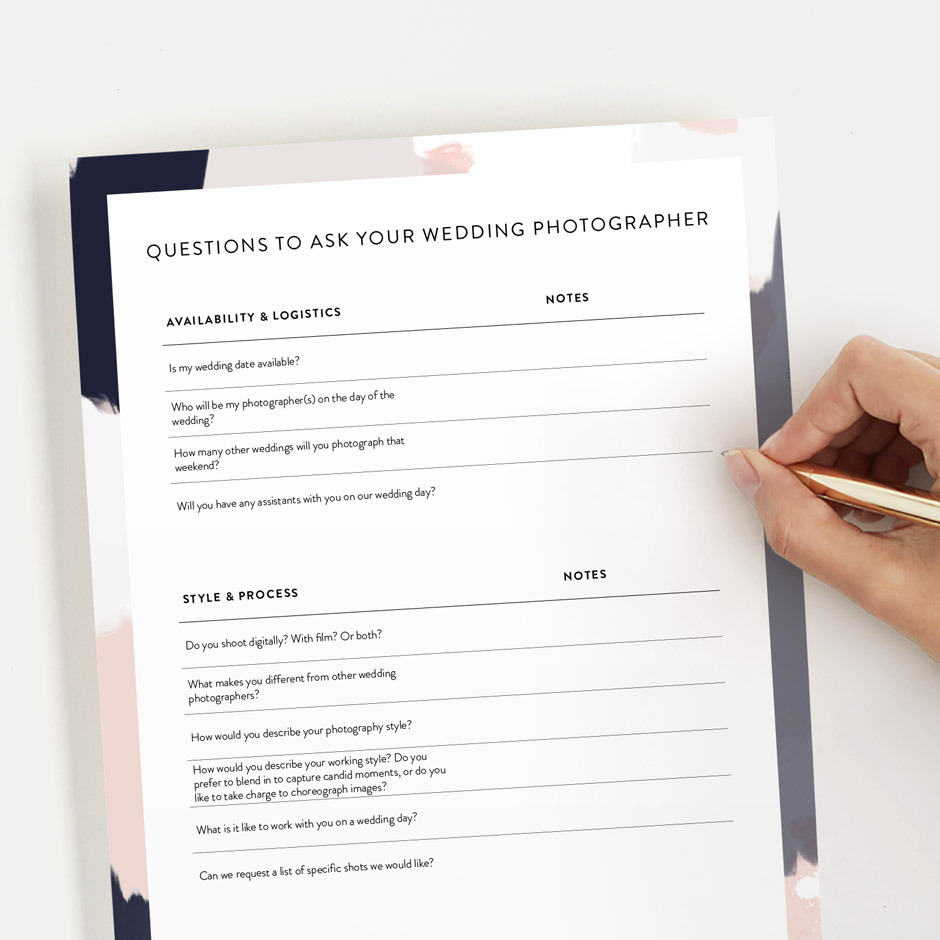Congratulations on making it this far! You must have sent out your save the date cards and your elegant wedding invitations, checked and rechecked your budget spreadsheet, updated the details on your wedding website and so much more. You should be proud of yourself. While letting the guests’ responses trickle in, you can start thinking about the seating chart.
Creating a wedding seating chart may feel like a quick and easy task, but finding the right spot for each guest and a table arrangement that works well for your venue can be surprisingly time-consuming. In this article, we'll try to help clear up some wedding seating chart confusion and provide you with some tips to make this aspect of event planning a breeze!
Shop Wedding Signs

Seating chart: "Someone Like You" by Design Lotus
How To Create Your Wedding Seating Chart
1. Seat Yourselves
You and your new spouse will be the center of attention all evening, so seat yourselves in a central location where all your guests can see you. This is the first wedding seating chart etiquette to note.
One option would be to sit at a table with your wedding-party members (often called the "head table"), with your seats in the middle. Or, you could sit with your parents and let that be the head table, with the wedding party scattered at different tables with their dates.
Another popular option is to sit with your new spouse at a table reserved for just the two of you. This arrangement is often called a "sweetheart table."

Photo: Lauren Gabrielle
2. Seat the Wedding Party
Figuring out where to seat your wedding party members depends on how big your entourage is and how many of them attended the wedding with dates. Depending on your wedding party's size, one option would be to place all members at a long head table with the newlyweds positioned in the middle (as described in the previous step).
A drawback of this seating arrangement is that attendants' dates and spouses will have to sit at separate tables, which might not be ideal (separating dates and partners is never a good idea). A more preferred option would be to place wedding-party members at several VIP dinner tables near you and your new spouse.
Do you want to seat your guests based on how you know them or according to their interests? There is nothing wrong with placing your bridesmaids and groomsmen at tables with other guests around the reception. They'll have spent the first part of the day together, so it will be great for them to socialize with others.
3. Seat Parents and Grandparents
Wedding seating chart etiquette states that you and your partner's parents will share a table at the reception, along with grandparents, siblings not in the wedding party, and the officiant and their spouse if they're attending the reception. However, if either of you have divorced parents who would prefer to sit separately, a solution would be to have each parent host their own table of close family and friends.
This arrangement could mean up to four parents' tables, depending on your situation. You can also try seating them at the same rectangular table, but at opposite ends. If you're unsure of how to proceed, it's probably best to talk to your parents about what they might prefer before you make your final seating decisions.
4. Make Family Tables
When planning the seating assignments, consider placing geographically spread-out family at a table together. If you or your partner have large families that don't get together often enough, it might make everyone's night to sit together and catch up over food, drinks, and dancing. Family tables are also great for guests with multiple kids.

Photo: Vicki Grafton
5. Make a Kid's Table
Children are much more comfortable around other children (as opposed to adults), so if there will be kids at your wedding, seat them together at a separate kids' table. Provide activities and crafts at their table to keep them occupied. Entertaining the children means their parents can take a break and enjoy the festivities. If your flower girl and ring bearer are the only children present, seat them with their parents.
6. Mix and Match Guests
Weddings are for bringing people together and are the perfect opportunity for you to introduce friends and family who may not have met before. Mixing and matching guests in your arrangements can encourage friendships you've wanted to happen.
A bonus is that they'll already have common ground to bond over; you and your partner! Of course, if you're going to encourage connections even more, you can set out getting-to-know-you games or prompts at each table.
One of our favorite event planning tips is if you aren't sure where to place someone, ask. Do you have no idea where to seat your parents' friends? Let your folks arrange those tables. They'll be happy to be included in the process and to have a say in seating their pals.
Shop Wedding Signs
Tips on Creating Wedding Seating Charts
1. Start early.
Before all the RSVP responses come in, you can find inspiration from wedding blogs, social media, and your vendors for a seating chart design and layout that will fit your theme, colors, and venue.
You'll need to set your RSVP deadline for at least two to three weeks before the wedding. Once you have a better idea of how many guests you will have (and who they will be), you can start using a wedding seating chart website or app like Allseated. This tool is one of our favorite wedding planning services. It allows you to design your wedding layout to scale so you can envision where your guests will sit during your ceremony, or at your wedding reception.
2. Spreadsheets will save your life.
Use a spreadsheet to track RSVPs as they come in. If you are using Minted’s online RSVP on the wedding website, export the list from the website. Next, insert a column into your RSVP spreadsheet categorizing and color-coding all guests by relationship. Color coding is an easy way to visually sort your guest list and break it down into more logical table groupings.
If you work based on the invitation list, don't forget to remove the guests that can't attend from the spreadsheet who can't attend, and make sure to add in plus-ones!

"Love Story" escort cards by Liz Conley
Photo: M Place Productions
3. Finalize the reception layout.
Once you have a finalized headcount and the square footage of your dining area, it’s time to start drawing up your layout. Work with your caterer/venue to figure out the most optimal table layout, so guests won’t be bumping into each other and servers can easily cater to each guest. Maximizing the space means guests won't feel crowded, and servers will have enough space to cater to each guest efficiently.
Another consideration is the table shape. Round tables are the standard option. This shape is also the easiest to work with since you'll only need to consider who each guest will sit next to on their right and left sides. Longer rectangular tables take a bit more planning to figure out how to seat guests, as there are guests to the left, right, and across from you.
4. Physically Map Out Wedding Seating.
If you are struggling with settling on a layout or would prefer to plan on paper rather than using a wedding seating chart app or website, physically mapping out your wedding seating using sticky notes on a piece of paper is a great alternative.
You can color code them using the method described above (and start making them as you send out invitations). Pro tip: use scaled paper cut-outs to visualize the tables. This way, you can move everyone around the room as you consider space, photography, and aesthetics.
5. Bring Seating Charts.
The final step is to figure out how you'll tell guests where they're seated. Tented escort cards—individually printed with each guest's name and table number—is a simple way to do it.
Carefully arranged escort cards are a great photography moment, too! Or, you could get creative with more prominent seating-assignment signs or charts. Use your creativity to look for some escort card inspirations.
Arrange guests' names in alphabetical order by last name, so folks can easily find their table assignment. Also, be sure to use a large, readable font, so there's no confusion.
Do you want to ensure that each of your guests gets a nice photo at your wedding? Set up a station with your photographer so guests can collect their cards and have their picture taken before the festivities begin.
Check out our favorite seating chart ideas!

Photo: Jessa Schifilliti
6. Share Your Wedding Seating With Your Vendors.
Event planning can be stressful, but that is why it is critical to work with vendors to help you achieve your goals! Keeping everyone in the loop is essential as you set seating assignments, so be sure to share your wedding seating chart with the vendors working on catering, music, location, and photography. Once you have physically mapped everything out, share it with your team. If you have a physical drawing, take a picture or scan it. If you're using an app or website, you can share the link with your team or invite them to view it with a few clicks.
No one knows the space better than your venue hosts. Ask your venue about what has previously worked in the space, or what definitely won't fit, check with them.

Photo: Jenna Greenawalt Photography
WEDDING SEATING CHART FAQs
Should a seating chart list names alphabetically by guests' first names or last names?
For clarity and ease, it's best to arrange guests’ names in alphabetical order by last name, followed by his or her assigned table number. Resist the urge to group guests by table, that will take guests a very long time to find their name and will result in a bottleneck as guests crowd around to get their table assignment.
Who sits at the head table at a wedding?
The "head table" refers to the table where the newlyweds will be sitting. You could decide to sit with your new spouse at a table just for two, which is sometimes called a "sweetheart table." If you prefer to sit with your guests, you could sit with your wedding-party members (with you and your new spouse positioned in the center) and designate that table as the head table. Or, you could opt to sit with your parents and let that be the head table.
Does the bride sit to the right of the groom?
Traditionally, the bride sits to the right of the groom. However, if you are not worried about keeping things traditional, you and your partner should feel free to sit however you want to! Chances are, you won't be spending too much time seated anyway.
Do the parents of the bride and groom sit together?
This all depends on your family situation, but traditionally, your parents and your partner's parents would share a table at the wedding reception. Additional VIPs would also be seated at the same table, like grandparents, siblings who aren't already in the wedding party, and other close family friends.
However, if your or your partner's parents would prefer to sit separately, then each set of parents could host their own table of close family members and friends; the same applies if your or your partner's parents are divorced—each parent could similarly host their own reception table. But if you're truly stumped about where to seat your parents, it's best to talk with them directly to find out what they would prefer.
Do the bridesmaids and groomsmen sit together?
At many weddings, the wedding party sits together, either at a table with the newlyweds or nearby (this also depends on how big your wedding party is!). In the end, you know your guests best, and there are no hard rules for where everyone should sit.
What's the difference between an escort card and a place card?
These small, tented cards look very similar but serve two different purposes. Escort cards are printed with a wedding guest's name and their table number assignment. This card lets the guest know which table they will be sitting at. Place cards are printed with just the guest's name and indicates which seat at the table has been assigned to them.
Shop Wedding Signs




